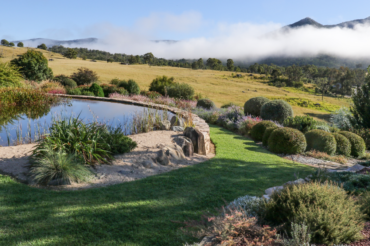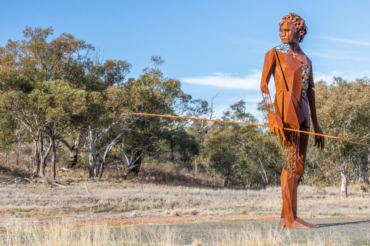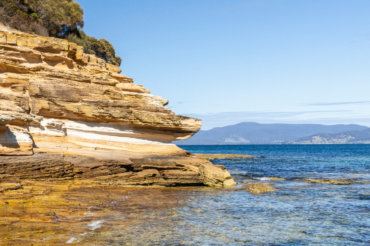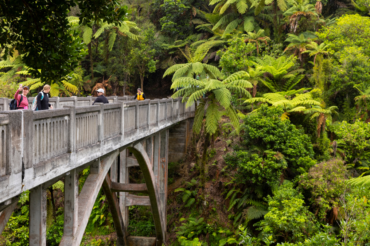
Sitting on the verandah of our cabin at Takarakka Bush Resort it feels as though we’ve popped up on the set of Life on Earth. A mob of kangaroos is grazing nonchalantly just metres away. One female with a joey on board ventures so close to the steps that we could practically reach out and pat her. Then in the middle of all this domestic bliss suddenly all hell breaks loose when two large bucks start a boxing match.
You can practically hear David Attenborough softly intoning about the dominant male fighting to protect his mating rights. Unlike the jovial creature in gloves depicted on the sporting flag, however, these roos seem to be engaged in a fight to the death. Using his smaller front legs to hold his opponent, the big roo rests back on his tail and uses his full body weight to lash out with his massive hind legs. The younger male responds with another vicious kick, the leader of the pack retaliates, and on and on it goes, with the surrounding members of the mob only shifting to move out of the line of fire. Then just as quickly as the brawl erupted, it subsides. The younger make hops away, presumably to lick his wounds, while the old buck resumes his dinner.
It turns out that this ring-side seat at Mother Nature’s great show is pretty standard fare for visitors to Carnarvon Gorge in central Queensland. Located 700 kilometres north-west of Brisbane, pretty much midway between Roma and Emerald, the gorge stretches for 30 kilometres through the Great Dividing Range. It is protected by the 3000-square-kilometre Carnarvon National Park, which is divided into three sections across Queensland’s central highlands.
The gorge has formed across millions of years as Carnarvon Creek etched its way down through the basalt-topped sandstone. The cliff-lined canyon provides refuge for many significant plants and animals, some of them relics of cooler, wetter times. Remnant rainforest flourishes in the sheltered side-gorges while endemic Carnarvon fan palms, ancient cycads, ferns, shrubs and gums line the main gorge and grassy open forest grows on the clifftops. The creek and waterholes attract a wide variety of animals including more than 173 species of birds, 60 different mammals, 22 types of frogs, and 90 kinds of reptiles. Of the numerous plant species, 23 are listed as rare or vulnerable in Queensland legislation.
This story was originally published in the February 2016 issue of Australian Country. Subscribe to the magazine here.
Click here for more escape stories.
Words Kirsty McKenzie
Photography Ken Brass
















